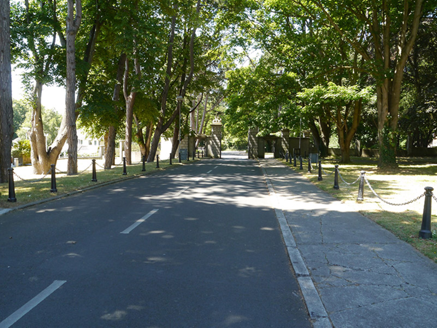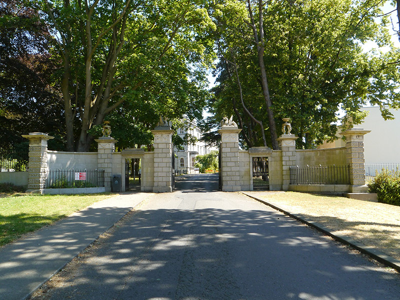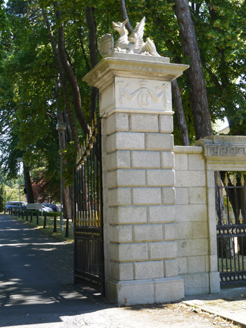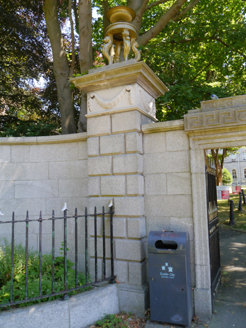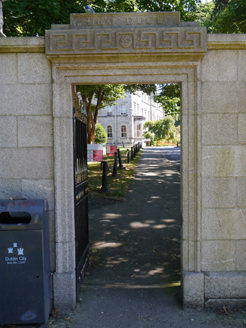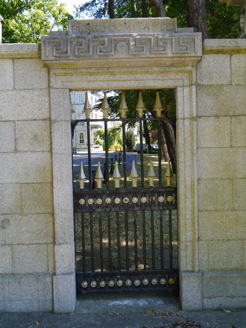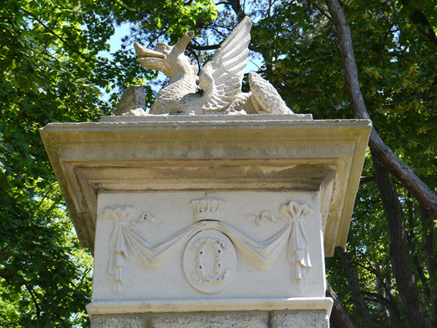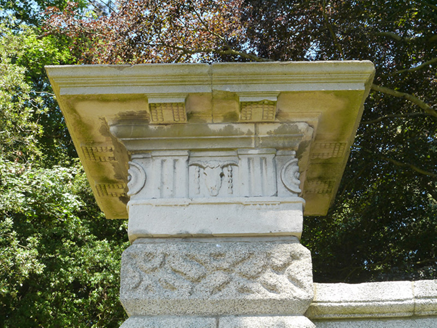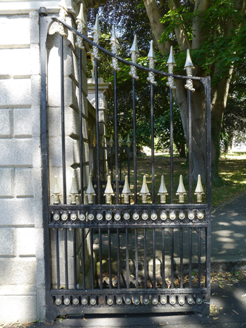Survey Data
Reg No
50130262
Rating
National
Categories of Special Interest
Architectural, Artistic, Historical, Technical
Previous Name
Charlemont
Original Use
Demesne walls/gates/railings
In Use As
Gates/railings/walls
Date
1765 - 1775
Coordinates
317475, 237261
Date Recorded
03/07/2018
Date Updated
--/--/--
Description
Granite quadrant gate screen, erected c. 1770, originally for Marino Demesne and located to south on Fairview. Now in use as entrance to Marino Institute of Education. Comprises symmetrical arrangement of vehicular and pedestrian entrances, latter set in ashlar walling, flanked by piers and concave ashlar screens and terminating in outer piers. Inner piers have channelled blocks and outermost have vermiculated blocks. Portland stone friezes to piers, elaborated to sets flanking entrances, with moulded plinths and plinth course. Vehicular piers larger in plan than others and have swags to friezes and reclining griffins to pedestals over cornices; pedestrian piers have swags to friezes and pedestals with painted cast-iron cups supported by griffins rampant. Outermost piers have Doric frieze with bucrania and wide cornice. Replacement steel double-leaf gates and railings. Pedestrian entrances are square-headed, with raised moulded surrounds and lintels with Meander frieze and emblazoned 'Deo Duce' and 'Ferro Comitante', respectively. Gateway set among trees on entrance drive to Marino Institute of Education.
Appraisal
An important Georgian gate-screen, designed by William Chambers and Battista Cipriani about 1770. Along with the Casino, it is one of the few remainders of the grand demesne of Marino House that was established by James Caulfield, 1st Earl of Charlemont. The screen has strong associations with the Casino, also designed by Chambers and makes clear its association with the dormer demesne through the Charlemont motto emblazoned above its entrances. It is an attractive, well-balanced design, adopting decorative aspects of classical design, such as bucrania, friezes and swags, without the explicit use of the orders and distinguished especially by the unusual reclining griffins on the central piers. The quality of stone carving and metal casting is excellent. It is now easily missed, being set back from Griffith Avenue and the twentieth-century gates and lodge. However, it makes a strong and important contribution to the architectural heritage and historic context of the Marino area, and the national heritage.
